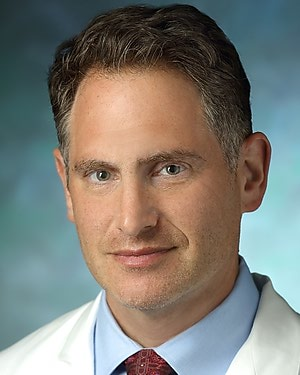Takeaway
As a hospitalist, I'm in a position to establish intense relationships with patients. Here are my five core beliefs, values, and premises that govern my approach to clinical care in this setting.

Passion in the Medical Profession | May 7, 2018 | 2 min read
By Daniel Brotman, MD, Johns Hopkins Medicine
1.) Patient autonomy is fundamental. It’s crucial to assess each patient’s goals for hospitalization.
Sometimes patients want reassurance that the illness they have isn’t life-threatening or is easily curable. Sometimes they simply want relief of suffering. Some patients seek accurate prognostication or a shoulder to cry on. Some hospitalized patients want to personally control their chronic illnesses and seek the resources and knowledge to better care for themselves. Some patients want to take whatever medicines might help them; others only want the minimum essential treatments.
Without knowing a patient’s values, it is easy to assume that all patients have the same goals and priorities about their health care.
But our job, as providers, is to make sure that we customize our management to each patient. And we cannot do so unless we ask.
2.) The less we can “do” medically, the more time we need to simply “be” with our patient.
It’s sometimes easier to talk about what we can offer than what we can’t offer. Talking with patients and family members about the limitations of what medical care can accomplish and explaining what we can’t do is often just as important (if not more important) as talking about what we can offer.
Sometimes this doesn’t feel as rewarding for the provider. It’s harder to discuss why a patient isn’t a candidate for surgery or chemotherapy than to discuss the potentially curative options on the table.
But when what we have to offer technically (procedures and medications) is limited, then what we offer spiritually becomes invaluable.
3.) The care of the patient doesn’t end at the hospital door.
Hospitalists should be willing and available to address the clinical issue that brought the patient to the hospital until the issue is resolved or has been comprehensively handed off to an outpatient team that is willing to own and manage it. Some patients may require input from their hospitalist for months (and occasionally years) post-discharge.
4.) Medicine is a team sport.
If a provider can’t work well with other team members (nurses, therapists, social workers, and others) to ensure that all team members (including the patient and family) are on the same page, clinical care suffers, sometimes catastrophically. No matter how thorough a physician is, there will always be mistakes and missed cues. So being open to the input and redirection (while sometimes humbling) is part of being a good doctor.
Nurses, in particular, have saved my patients on more than one occasion.
5.) Senior clinicians must lead by example, including modeling communication with patients, families, and the medical team.
Bedside diagnosis isn’t an anachronism. It’s a fundamental part of medicine. The privilege of practicing in a modern healthcare setting with advanced diagnostics allows for laziness at the bedside, but the best bedside diagnosticians are often the best doctors.

